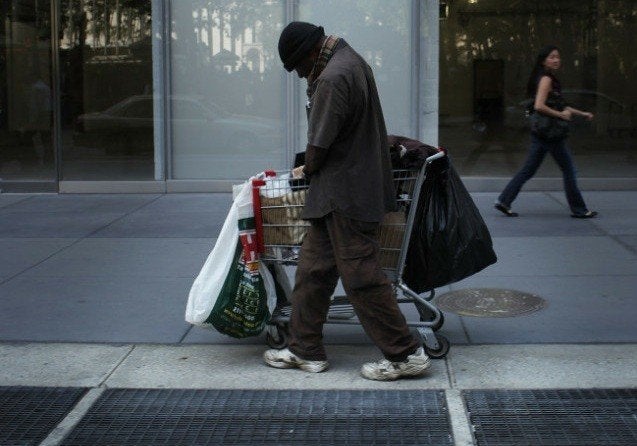
"Homefulness."
I'm actually not sure that it is a word yet, but what a great idea! "Homefulness" instead of "homelessness." It's more than just four walls, a roof and a bed. It's a more hopeful perspective, one that makes me think of what we strive to achieve at Friendship Place: A city and a nation where everybody has a place to call home. Hope and change inform everything we do to empower our neighbors who do not have homes -- yet -- to rebuild their lives. This is how we make a lasting impact on homelessness.
Twenty-one years into it, Friendship Place is leading with solutions that are simple and applied, and are developed by listening to our program participants.
Take AimHire, our job placement program, for instance. People would come to the drop-in center and say, "I took the training program. I have the certificate now, and I still can't find a job." We decided to do something about that. We got together with participants -- they're always at the table here at Friendship Place -- volunteers and staff, and designed a program. We wanted this program to make a difference by focusing mostly on job placement. And, it has done just that. This was not a painless process or a Hollywood moment. We actually had a rocky start. But we held the course, and, lo and behold, we found the way to make it work.
In less than a year, AimHire, with its very small team, has placed 40 people in jobs all over the D.C. Metro Area. And, by the way, these folks came from the street, rebuilding from the bag on their shoulder, so the program evolved into a job placement and housing program, simply because that's what people needed.
We know that the homeless have a desire to work. The statistics show this: In the D.C. Metro Area, 14 percent of homeless youth, 17 percent of single adults and 35 percent of adults in families currently work. Some of these figures were even better in years past, but here we are...in a crisis! At a time like this, programs like AimHire offer people practical help that does not come with a lot of hoops to jump through. The low- barrier, "come as you are" approach works. The last thing people on the street want to hear is that they need to do something for another six months or a year in order to get a job. Friendship Place finds ways to make people feel hopeful and "homeful" again -- now.
This kind of initiative is really important because the city is at point where a lot of the traditional homeless resources have been exhausted and, also, because it draws people who do not qualify for permanent supportive housing. Their level of need is simply not as high as other as other people's on the street, who are more vulnerable; as a result, the system does not have much to offer them in terms of assistance. This is why finding non-traditional solutions is crucial.
These folks are also completely motivated, and, with a little bit of assistance, we are finding that they can be on their way with a job and a place to live within weeks. They are therefore bypassing the system altogether, in a sense. From the perspective of a system that simply cannot meet the demand, this is good news.
As homelessness in the City rises, creating cost-effective services is one step toward addressing the current concerns about the drop in public funding. The D.C. Point-In-Time Count of Homeless Persons for 2012 has just been released, and homelessness is on the rise among families. It is a common belief that we cannot solely rely on a one-day count, but the trends the report shows are concerning. The more ways homeless service organizations and their partners creatively reposition their resources to maximize their programming outcomes, the better for the system as a whole, and the faster we will get to "homefulness."
